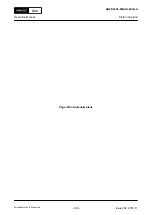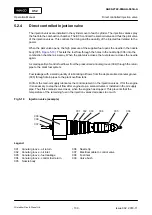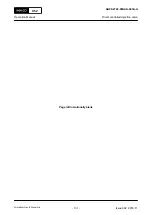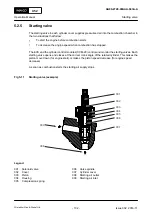
5.2.6
Exhaust valve
The exhaust valve in each cylinder cover releases the exhaust gas of the combustion into the
exhaust gas manifold. The hydraulic oil pressure from the exhaust valve control unit (VCU) opens
the exhaust valve. The pneumatic pressure of the air spring closes the exhaust valve.
Fig 5-12
Exhaust valve (generic)
001
002
003
004
005
006
007
008
009
010
011
012
014
013
Legend
001
Upper housing
008
Cylinder cover
002
Inside piston and outside piston
009
Rotation wing
003
Lower housing
010
Cup spring
004
Air spring piston
011
Air spring
005
Valve spindle
012
Leakage oil collection space
006
Valve cage
013
Hydraulic oil inlet
007
Valve seat
014
Damper
The exhaust valve has the parts that follow:
•
Inside piston and outside piston
The inside piston and the outside piston (002,
) move down when the VCU
applies pressurized oil through the hydraulic oil inlet (013). The valve spindle (005) moves
down and the valve seat (007) is open.
•
Rotation wing
The exhaust gas applies a force on the rotation wing (009). This turns the valve spindle
(005) to balance the heat and mechanical forces and to prevent particles on the exhaust
valve.
X52
AA00-2751-00AAA-043A-A
Operation Manual
Exhaust valve
Winterthur Gas & Diesel Ltd.
- 134 -
Issue 002 2018-11
















































